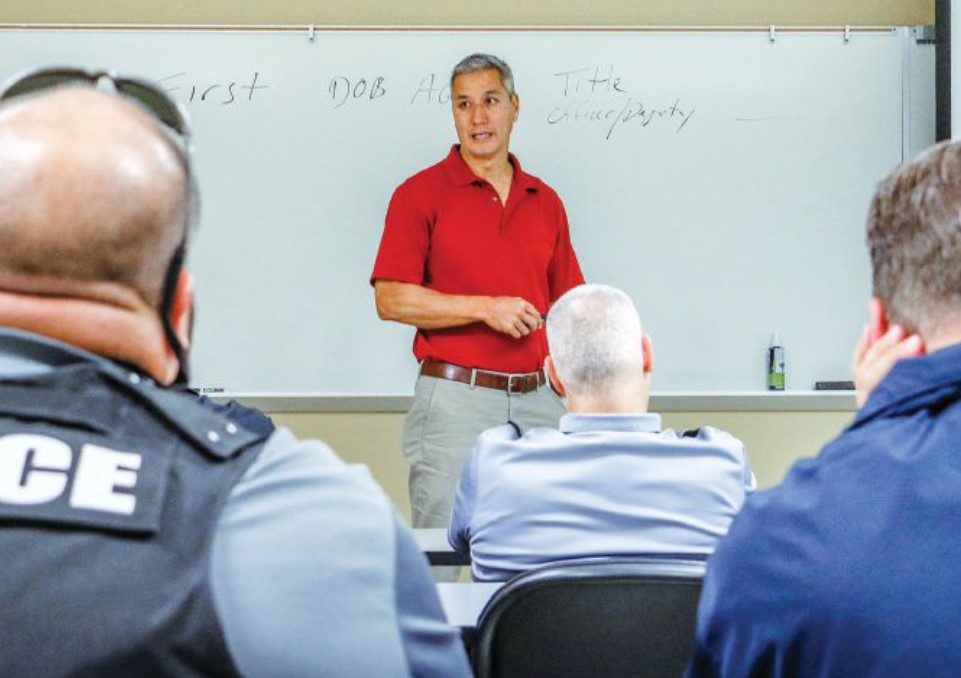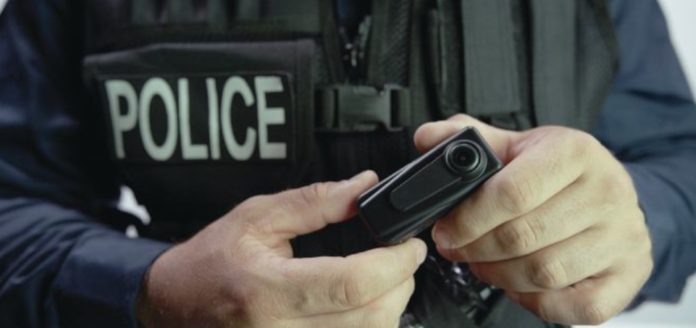The stomach-turning, caught-on-video death of George Floyd in police custody on May 25 in Minneapolis sparked several, well defined conversations across the U.S. and beyond. One came in the form of heavy public scrutiny on police actions and how officers are trained for a job that’s ultimately about community protection and service. How could this have happened? Was the officer, who was charged with murder in this case, following some kind of standard in kneeling on Floyd’s neck as he pleaded for breath? What are sworn officers actually taught to do in different situations?
Nationwide, there’s no single answer. But the League through its Shield Services program has long provided training to North Carolina police officers for the safest, healthiest outcomes possible, which don’t match what we saw in Minneapolis. The League also directly reviews the policies and procedures of individual law enforcement departments, in an offering called the Law Enforcement Risk Review, to make sure the agency is in line with best practices and reduces exposure to bad situations.
Law Enforcement Risk Review
“From a proactive standpoint, a lot of the areas that you see in the Risk Review predate these (recent police) events by years,” said Tom Anderson, the League’s Director of Risk Control and Public Safety Risk Management. He’s also a former Statesville police chief. “We were already training for supervisors, training for personnel, best practices related to use of force. We already had a provision that prohibited chokeholds unless it was a deadly force situation and the officer didn’t have any other means.”
The Law Enforcement Risk Review process includes a policy review and comprehensive agency site evaluation, designed to validate that policies and practices are meeting the recommended best practices. As changes are needed during the review, recommendations are simply made and the time given for the needed changes to take effect.
This ever-evolving initiative was peer-constructed and reviewed by the League’s Police Chiefs Advisory Committee, comprising chiefs from more than 12 agencies from across North Carolina. As new risk-related issues are identified through activity tracking regionally and nationally, new categories are adopted and added to the review process.
Anderson and League Public Safety Risk Management Consultant Matthew Selves, a former Troutman chief of police, have administered risk reviews in police departments all over the state, and at no cost to League Property & Casualty Trust members, a huge value add.
“The reward is knowing that our police department and officers are protected by having really strong and sound policies and procedures,” Pine Knoll Shores Police Chief Ryan Thompson said after his agency completed the review. “I would absolutely recommend any department to go through the Risk Review process.”
Advance Use of Force Training
Good officers avoid using force if they can help it, which is why the League-coordinated Advance Use of Force Training is so crucial. Offered in classroom fashion multiple times per year, and being scheduled for online participation, it’s a three-day course designed for police chiefs and command- or training level officers that are in a position to address policy development and implementation, again free to Property & Casualty Trust members.
The course is carefully designed and research-based to increase the student’s comprehensive knowledge of use-of-force issues, conducted electrical weapons, course cases, training and related risk management, all in all eliminating guessing games in quick judgment calls as much as possible.
“It’s not an art, it’s a skill,” Gerald Takano, a retired Raleigh Police Department lieutenant and expert in use-of-force issues, told police officials of clutch or sudden decision-making in a recent Advance Use of Force class held at the Wake Tech Law Enforcement Training Center in Raleigh. “It’s a skill that must be practiced. Practiced, assessed and tested.”
The science that informs it is ever-evolving, particularly on how humans react in distressing scenarios, and it’s not all in the brain. There are physiological responses to psychological processing, Takano pointed out. For one, blood flow pulls away from the skin, numbing the nerves and the sensation of pain. Breathing and heart rate changes. Tunnel vision manifests. Hearing is affected. But indeed, the brain is the big one, and understanding it can help officers in these situations. “The fear, anxiety, anger… It’s okay to feel all of those emotions,” said Takano. “We don’t care about them as long as we do what? Don’t let them interfere with our decision-making process. In other words, manage the emotions.”

Dangerous Crossroads Ahead
Anyone who follows police matters on social media eventually runs across the increasingly common civilian-produced smartphone videos recording police encounters, sometimes in ways that challenge police officers on the scene. Sometimes, the video-maker’s intent is to test officers’ reactions, to see how cool or respectful of civil liberties they remain under pressure. It’s not uncommon to see the person behind the camera even goading the officer. These videos are often referred to as “First Amendment audits,” which are posted online for the world to see. Law enforcement officers are at least familiar with the concept, or have had such encounters directly.
It’s a scenario taken up by League-arranged training offered several times per year called Dangerous Crossroads Ahead – looking at the intersection of the First and Fourth Amendments. The course, taught by Charlotte-based attorney and civil rights expert Scott MacLatchie, provides practical tips for officers in dealing with people who may be legitimately exercising constitutional rights and others who are actively trying to bait officers into overreaction.
Topics explored are those often theming the videos going viral on Instagram and YouTube — refusal to identify, refusal to answer questions, dealing with bystanders, profanity towards officers, filming of police activity and police facilities, related officer safety concerns, weapons pat downs, and the seizure of cameras or cell phones that have recorded police activity.
The League has info about all three of these timely programs, and more, online at https://www.nclm.org/insurance/shield-services.
Just as the League’s police trainings have been in place long before the events of 2020, it’s committed to evolving its offerings for best of police work and community quality.
Said League Executive Director Paul Meyer, acknowledging the importance of the current national dialogue on injustices, “The League, through its law enforcement trainings and ever-expanding collection of resources, is uniquely prepared to further these efforts. They are our top priority.”














